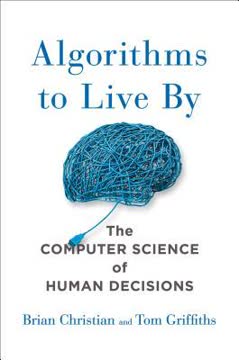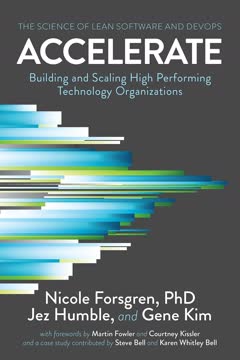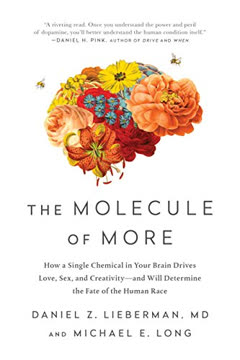Key Takeaways
1. The Fourth Transformation: From Mobile to Mixed Reality
"We are now at the dawn of the Fourth Transformation. It will move technology from what we carry to what we wear."
A new era begins. The Fourth Transformation represents a shift from mobile devices to wearable technology, particularly mixed reality (MR) headsets. This transition is driven by advancements in virtual reality (VR), augmented reality (AR), and artificial intelligence (AI). Unlike previous transformations, which changed how we interact with technology, this one focuses on enhancing our experiences.
Evolutionary stages:
- Mainframes to personal computers (text-based interfaces)
- Graphical user interfaces (GUI) and the web
- Mobile devices and touch interfaces
- Mixed reality and spatial computing
By 2025, it's predicted that most people will use MR headsets more than smartphones, fundamentally changing how we interact with technology and the world around us.
2. Virtual and Augmented Reality Reshape Entertainment and Gaming
"VR is like nothing that has preceded it. It is exciting, creative and fun."
Immersive experiences redefine entertainment. Virtual and augmented reality technologies are revolutionizing the entertainment industry, particularly in gaming and storytelling. These technologies offer unprecedented levels of immersion and interactivity, allowing users to become active participants rather than passive observers.
Key developments:
- VR headsets like Oculus Rift and HTC Vive offering fully immersive gaming experiences
- AR games like Pokémon Go blending virtual elements with the real world
- Immersive storytelling in film and theater, allowing audiences to explore narratives from multiple perspectives
- Social VR platforms enabling new forms of interaction and shared experiences
The entertainment industry is rapidly adopting these technologies, with major companies like Disney and Universal Studios incorporating VR and AR into their theme parks and attractions.
3. Augmented Reality in Enterprise: Enhancing Productivity and Safety
"Boeing set up a test in 2016 using two groups that were training to build airplane wings. One used tablets containing an AR version of the manual, while the other used the standard PDF version. The AR group was 30% faster and 90% more accurate."
AR boosts efficiency in the workplace. Augmented reality is transforming various industries by enhancing worker productivity, safety, and training. Many large corporations have already adopted AR technologies for a wide range of applications.
Examples of AR in enterprise:
- Manufacturing: Assembly line workers using AR glasses for step-by-step guidance
- Logistics: Warehouse staff using AR for faster and more accurate order processing
- Automotive: Designers using AR for collaborative 3D modeling
- Aerospace: Pilots using AR helmets for enhanced situational awareness
AR's ability to overlay digital information onto the physical world makes it an invaluable tool for improving workflow efficiency and reducing errors in complex tasks.
4. The Revolution in Healthcare: VR and AR in Treatment and Training
"MindMaze uses motion capture, a technology used in animated filmmaking where computer-generated animation precisely mimics an actor's motions. But MindMaze adds a feature called mirroring."
Transforming patient care and medical training. Virtual and augmented reality technologies are making significant strides in healthcare, offering innovative solutions for both treatment and medical education. These technologies are proving particularly effective in areas such as pain management, rehabilitation, and surgical training.
Key applications in healthcare:
- Pain management: VR environments for distraction during painful procedures
- Rehabilitation: AR and VR for stroke recovery and physical therapy
- Mental health: VR exposure therapy for phobias and PTSD
- Medical training: AR and VR simulations for surgical practice
- Telemedicine: AR-assisted remote diagnoses and consultations
The integration of these technologies in healthcare not only improves patient outcomes but also provides safer and more effective training methods for medical professionals.
5. Education Reimagined: Immersive Learning Experiences
"VR education will allow us to learn faster and more interactively than ever before. And VR collaboration spaces will allow us to work from anywhere to solve the world's grand challenges."
Transforming the classroom experience. Virtual and augmented reality technologies are revolutionizing education by offering immersive, interactive learning experiences. These technologies have the potential to make learning more engaging, memorable, and accessible to students of all ages and backgrounds.
Innovations in education:
- Virtual field trips to historical sites, museums, and distant planets
- Interactive 3D models for subjects like biology, chemistry, and engineering
- Immersive language learning environments
- Collaborative virtual classrooms for distance learning
- AR-enhanced textbooks and learning materials
As these technologies become more widespread, they have the potential to bridge educational gaps and provide high-quality learning experiences to students worldwide.
6. The Future of Retail: Ubiquitous Shopping in Mixed Reality
"Over the coming decade, mixed reality technologies will change the way people shop. The boundaries between online and in-store will blur to the point where they will almost disappear."
Shopping becomes seamless and personalized. Mixed reality technologies are set to transform the retail landscape, blending the convenience of online shopping with the tangibility of in-store experiences. This shift will create new opportunities for personalized marketing and immersive product demonstrations.
Key developments in retail:
- Virtual try-ons for clothing, makeup, and accessories
- AR-powered in-store navigation and product information
- Virtual showrooms for large items like furniture and cars
- Personalized recommendations based on eye-tracking and behavior analysis
- Seamless integration of online and offline shopping experiences
As these technologies mature, shopping will become more intuitive, efficient, and tailored to individual preferences, fundamentally changing the relationship between brands and consumers.
7. Eyefluence: The Power of Eye Interaction in Mixed Reality
"Eyefluence builds upon an eye tracking foundation to create something new and superior that it calls Eye Interaction. Instead of just watching a user's eye, and taking cues from winks, blinks, nods or taps, the technology understands user intent and then acts without gesture or voice cues."
Eye interaction revolutionizes user interfaces. Eyefluence's technology represents a significant leap forward in how we interact with mixed reality environments. By understanding user intent through eye movements, this technology promises to make interactions with digital content faster, more intuitive, and more natural than ever before.
Key features of eye interaction:
- Faster selection and navigation in digital environments
- Reduced need for hand gestures or voice commands
- Improved accessibility for users with limited mobility
- Enhanced user experience in both AR and VR applications
- Potential for integration with AI for predictive interactions
As eye interaction technology matures, it has the potential to become the primary method of interaction in mixed reality environments, fundamentally changing how we engage with digital content.
8. Potential Risks and Ethical Concerns in the Age of Mixed Reality
"What could possibly go wrong?"
Navigating the challenges of a new reality. While the Fourth Transformation promises numerous benefits, it also raises significant ethical and societal concerns. As mixed reality technologies become more prevalent, we must address potential risks and develop appropriate safeguards.
Key concerns:
- Privacy and data security in always-on, always-watching devices
- Potential for addiction to immersive virtual experiences
- Blurring of reality and virtual worlds, leading to psychological issues
- Cybersecurity threats in interconnected AR/VR systems
- Ethical implications of AI-driven personalization and decision-making
- Potential for increased social isolation and disconnection from physical reality
Addressing these concerns will require collaboration between technologists, policymakers, and ethicists to ensure that the benefits of mixed reality technologies are realized while minimizing potential harm.
9. The Dawn of Spatial Computing: Our World as the Interface
"Spatial computing is the concept that computers can learn the contextual implications of location and the relationships of objects to each other through point clouds."
A new paradigm in human-computer interaction. Spatial computing represents the ultimate goal of the Fourth Transformation, where the physical world becomes our interface with digital information. This concept goes beyond current AR and VR technologies, envisioning a future where digital and physical realities are seamlessly integrated.
Key aspects of spatial computing:
- 3D mapping and understanding of physical environments
- Contextual awareness of user location and surroundings
- Natural interactions with digital content in physical space
- Integration of AI for predictive and adaptive experiences
- Ubiquitous access to information and digital tools
As we move towards the age of spatial computing, the boundaries between digital and physical realities will continue to blur, offering new possibilities for how we live, work, and interact with the world around us.
Last updated:
FAQ
What's "The Fourth Transformation" about?
- Focus on AR and AI: "The Fourth Transformation" by Robert Scoble and Shel Israel explores how augmented reality (AR) and artificial intelligence (AI) are set to revolutionize various aspects of life and business.
- Historical Context: The book outlines the evolution of computing from mainframes to mobile devices, leading to the current era of spatial computing.
- Future Predictions: It predicts a future where technology moves from handheld devices to wearable ones, fundamentally changing human interaction with technology.
- Impact on Society: The authors discuss the potential societal and cultural shifts that will accompany these technological advancements.
Why should I read "The Fourth Transformation"?
- Insightful Predictions: The book offers a detailed look into the future of technology, making it essential for anyone interested in tech trends.
- Business Implications: It provides valuable insights for business leaders on how to adapt to upcoming technological changes.
- Cultural Impact: The book explores how AR and AI will affect everyday life, from shopping to education and healthcare.
- Balanced Perspective: While optimistic, the authors also address potential downsides and ethical concerns related to these technologies.
What are the key takeaways of "The Fourth Transformation"?
- Shift to Wearables: The transition from mobile devices to wearable technology will redefine human-computer interaction.
- Business Adaptation: Companies need to stay ahead of technological changes to remain competitive.
- Cultural Shifts: AR and AI will significantly alter how people learn, work, and interact socially.
- Ethical Considerations: The book highlights the importance of addressing privacy and ethical issues as technology advances.
How do the authors define "The Fourth Transformation"?
- From Mobile to Wearable: The Fourth Transformation refers to the shift from mobile devices to wearable technology like AR glasses.
- Spatial Computing Era: It marks the beginning of spatial computing, where the world becomes the interface.
- Integration of AI: AI will play a crucial role in making these technologies more intuitive and responsive.
- Cultural and Business Impact: This transformation will affect various sectors, including retail, healthcare, and education.
What are the best quotes from "The Fourth Transformation" and what do they mean?
- "The world is your interface." This quote encapsulates the idea that technology will become seamlessly integrated into our environment.
- "We are building a new God." This reflects the authors' view on the omnipresence and power of AI in future technologies.
- "Every generation needs a revolution." This emphasizes the transformative impact of AR and AI on society.
- "Imagination will often carry us to worlds that never were." This highlights the potential of AR to create new experiences and realities.
How will AR and AI change shopping according to "The Fourth Transformation"?
- Ubiquitous Shopping: AR will blur the lines between online and in-store shopping, making it a seamless experience.
- Personalized Experiences: Shoppers will use smart glasses to see product information and reviews in real-time.
- Location Irrelevance: People will be able to shop from anywhere, even while commuting in autonomous vehicles.
- Enhanced Customer Interaction: Retailers will use AR to offer personalized recommendations and streamline the shopping process.
What role does AI play in "The Fourth Transformation"?
- Intelligent Interaction: AI will enable devices to understand and predict user needs, making interactions more intuitive.
- Empathy and Learning: AI will develop capabilities like empathy, enhancing user experience and learning processes.
- Automation and Efficiency: AI will drive automation in various sectors, improving efficiency and productivity.
- Ethical Concerns: The book discusses potential ethical issues related to AI, such as privacy and data security.
How does "The Fourth Transformation" address the potential downsides of AR and AI?
- Privacy Concerns: The book highlights the risks of data collection and surveillance associated with these technologies.
- Job Displacement: It discusses the potential for job loss due to automation and AI-driven processes.
- Cultural Impact: The authors explore how AR and AI might affect human relationships and social interactions.
- Ethical Dilemmas: The book raises questions about the ethical use of AI and the need for regulatory frameworks.
What industries will be most affected by "The Fourth Transformation"?
- Retail: AR will revolutionize shopping experiences, making them more interactive and personalized.
- Healthcare: AI and AR will improve diagnostics, treatment, and patient care, offering new ways to manage health.
- Education: These technologies will transform learning environments, making education more immersive and accessible.
- Automotive: The rise of autonomous vehicles will change transportation and logistics, integrating AR for enhanced navigation.
How does "The Fourth Transformation" envision the future of education?
- Immersive Learning: AR and VR will create interactive and engaging learning experiences, replacing traditional methods.
- Global Access: Virtual classrooms will allow students worldwide to access quality education and resources.
- Customized Instruction: AI will enable personalized learning paths, adapting to individual student needs and pace.
- Teacher Augmentation: Virtual teachers will supplement human instructors, providing additional support and resources.
What is the significance of "Spatial Computing" in "The Fourth Transformation"?
- World as Interface: Spatial computing refers to the integration of digital information into the physical world, making it the new interface.
- Enhanced Interaction: It allows for more natural and intuitive interactions with technology, beyond screens and keyboards.
- Broad Applications: Spatial computing will impact various sectors, from entertainment to healthcare and beyond.
- Future Vision: The authors see spatial computing as the ultimate goal of the Fourth Transformation, reshaping how we live and work.
How does "The Fourth Transformation" suggest businesses prepare for these changes?
- Early Adoption: Businesses should start experimenting with AR and AI technologies to stay ahead of the curve.
- Customer Focus: Companies need to understand and anticipate customer needs, using technology to enhance experiences.
- Innovation Culture: Fostering a culture of innovation will help businesses adapt to rapid technological changes.
- Strategic Partnerships: Collaborating with tech companies and startups can provide access to new technologies and insights.
Review Summary
The Fourth Transformation receives mostly positive reviews, with readers praising its insights into the future of AR, VR, and MR technologies. Many find it informative and thought-provoking, especially for business leaders. The book's predictions about widespread adoption of these technologies by 2025 intrigue readers. Some criticize it for being too optimistic or lacking depth in certain areas. Reviewers appreciate the examples and real-life applications presented, though some note that the rapid pace of technological change may quickly date the content.
Similar Books










Download PDF
Download EPUB
.epub digital book format is ideal for reading ebooks on phones, tablets, and e-readers.




